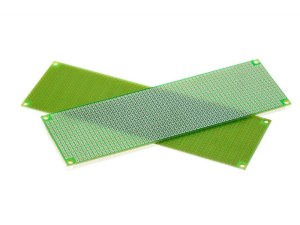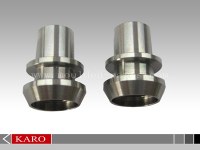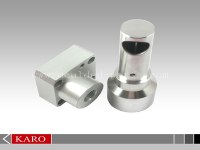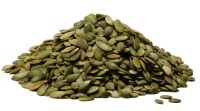Plant through hole via PCB or PTH PCB is the most common type. You only need to pick up the PCB to face the light, and the hole that can see the light is what we are looking for. This is also the simplest type of hole, because when making it, you only need to use a drill or a laser to directly drill the PCB, and the cost is relatively cheap. But on the other hand, some circuit layers do not need to connect the through hole. For example, there is a six-story house and you buy its third and fourth floors. You want to design a staircase inside that only connects the third floor to the fourth floor. It is fine between the fourth floor. However, the space on the fourth floor is invisibly used up by the original staircase connecting the first floor to the sixth floor. So, although through hole is cheap, it sometimes uses more PCB space.
Pack and unpack (PAU) of through-hole PCB
This process is used to prepare through-hole arrays. Unlike other double exposure processes, this process does not directly provide additional graphic resolution. The graphic resolution is only obtained during the first exposure, and the second exposure is just to select the required through a hole in the dense array.
Main difficulties of the pack and unpack (PAU) of through-hole PCB
The main difficulty in the PCB manufacturing service of this kind is how to cure the first layer of photoresist, that is, it is necessary to avoid damage to the first layer of photoresist during spin-coating of the second layer of photoresist and the influence on the first layer of photoresist during the second development.
Two solutions are proposed for this.
First, the two photoresists use different solvents, and the first layer of photoresist is insoluble in the solvent of the second layer of photoresist. The first layer of photoresist is soluble in ethanol but insoluble in PGMEA.
Second, the UV curing process is used to fix the first layer of the photoresist pattern. The curing process makes the first layer of photoresist very firm and prevents it from being dissolved by the second layer of photoresist solvent.
Grouping of through-hole PCB
For professional circuit board manufacturing companies, the PCB plated through-hole is traditionally divided into two groups: plated (supported) holes and non-plated (unsupported) holes. "Supported" refers to the plating on the hole wall. Non-plated or unsupported holes may or may not have bonding pads, such as mounting holes and non-porous wall plating. This is a manufacturing term, but for design, holes should be divided into two types: welded and unwelded.
If you have questions about our plating through hole PCB production capacity, or the specifications required for your custom project are not listed on this page, please feel free to contact us. We will reply within one workday. We will continue to provide quotation support and design support. Welcome to learn about our production process.
ZF Electronics is a professional pcb manufacturing companies. As a professional board manufacturing company, we provide pth hole in pcb, through hole vias pcb, pcb board with holes, pth board, pth plated through hole, circuit board with holes, pcb via plating and etc. Want to know more? Contact us.
Location : 810 Shang Xing Buliding, Shajing Town, Bao'an District, Shenzhen, China,, 518105 Shenzhen,
Contact : He Mike, +86 188 7956 1688








